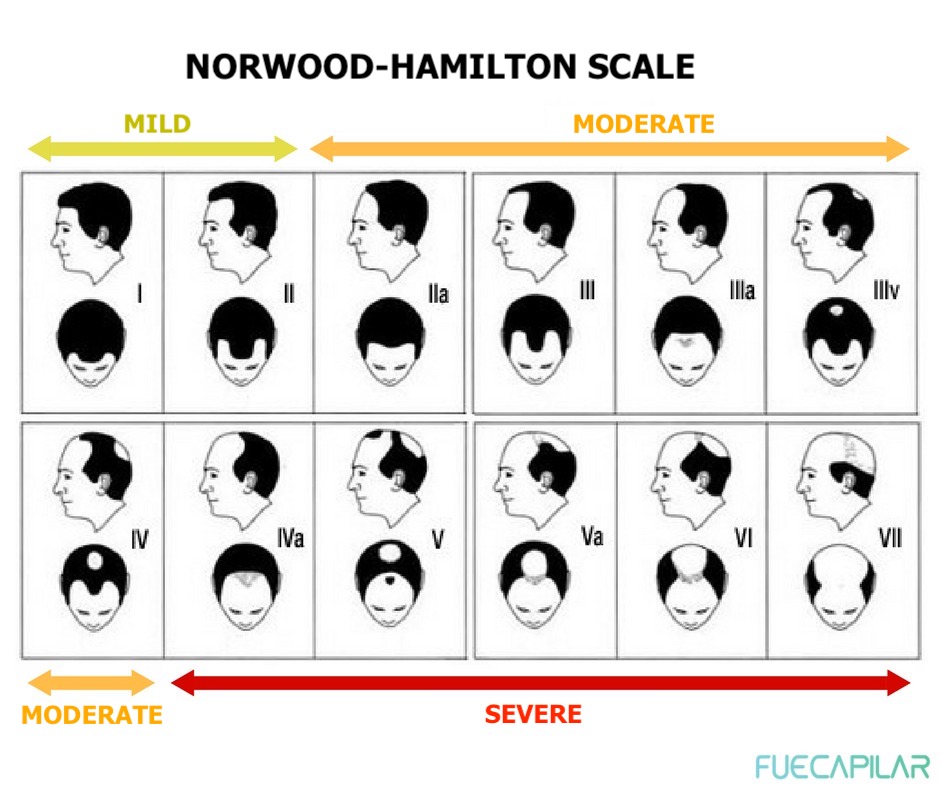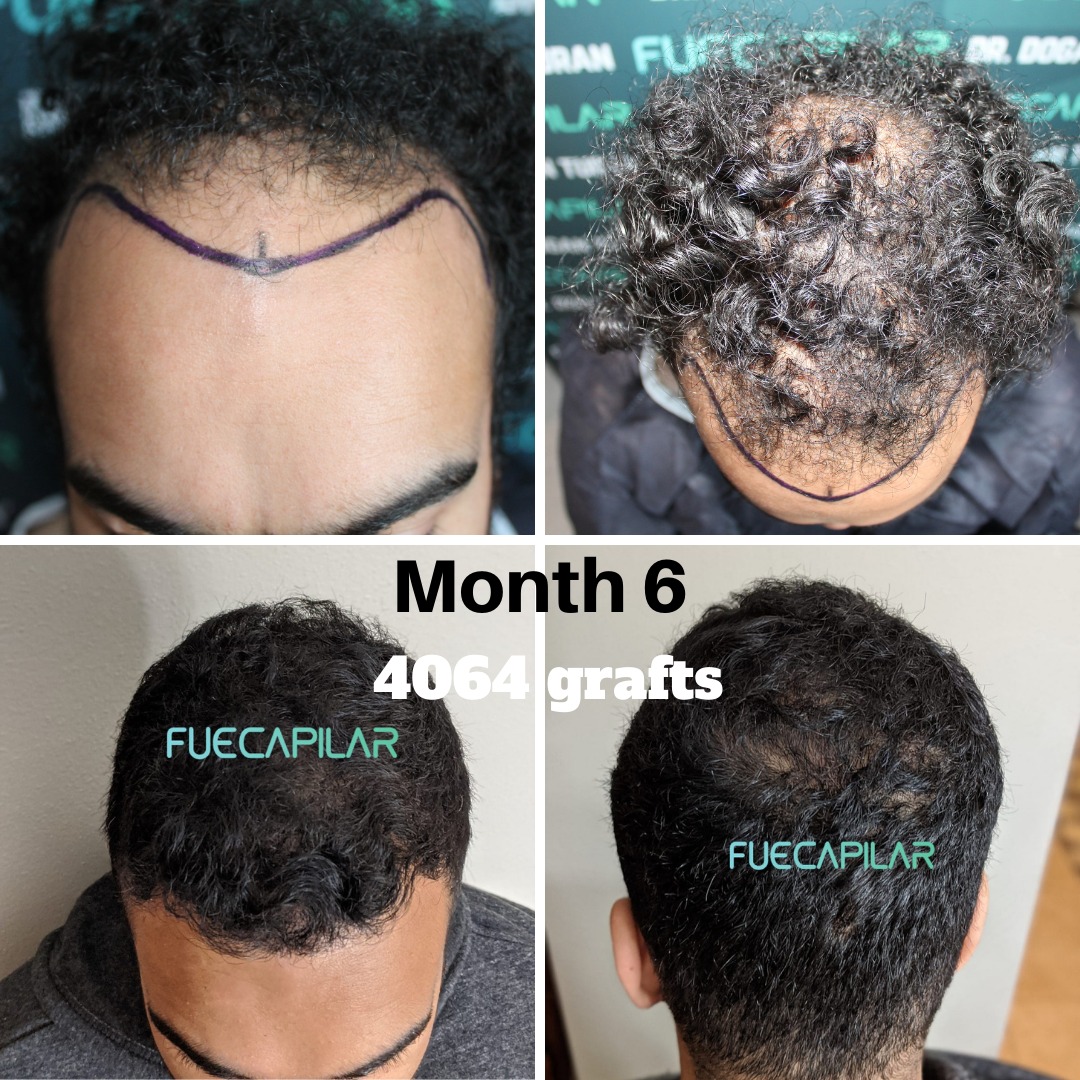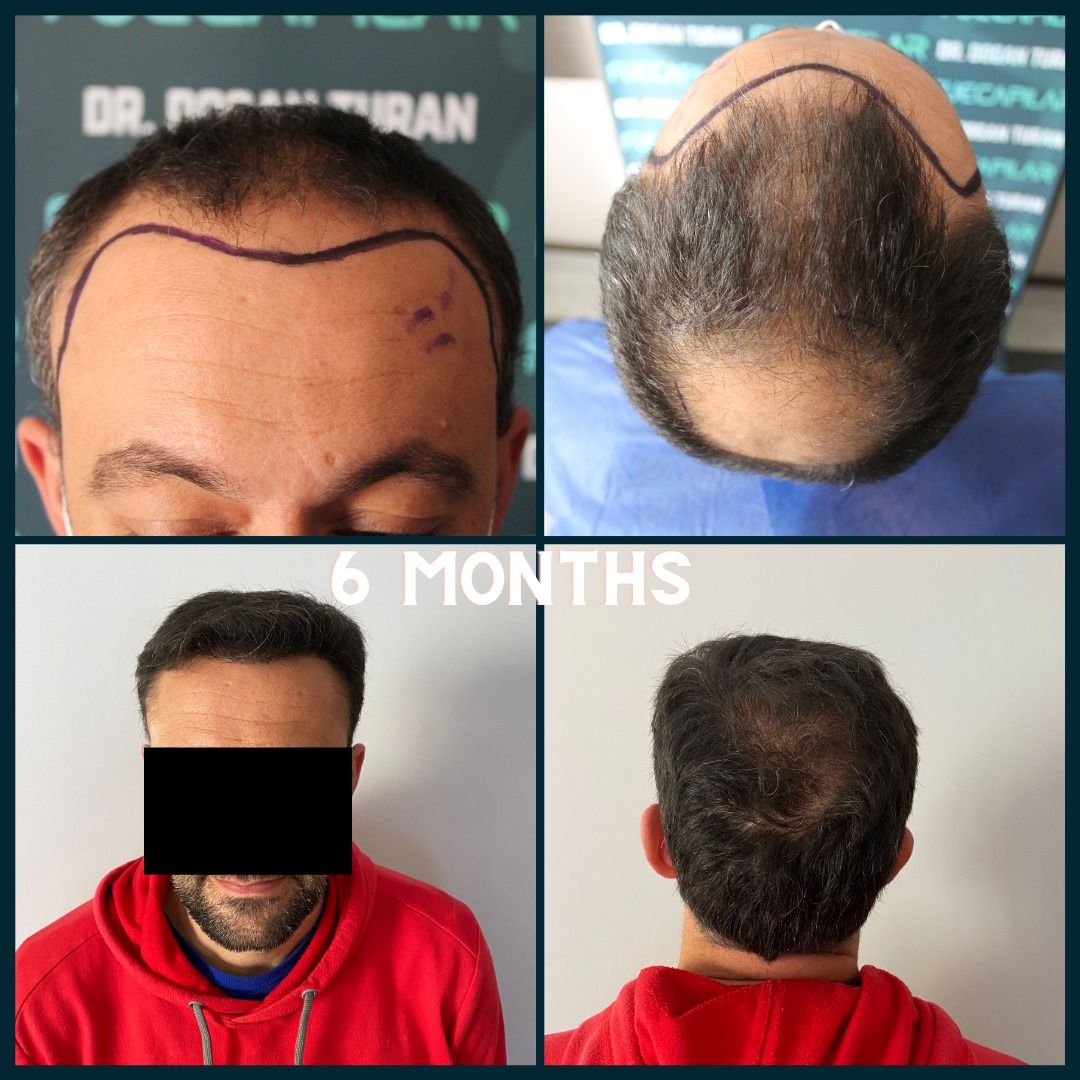One of the most recurrent questions we face in our practice is related to the lower density achieved in crown hair transplants in comparison to other areas implanted such as the frontal and mid-scalp.
Before we go into details, let’s clarify some crucial points:
What is the crown or vertex?
The crown is the highest area of your body; it is a swirl-like structure that grows in different directions clockwise. It normally has a central circular see-through natural sphere due to the natural growth of the hairs created by the whorl. Moreover, it is similar to what happens in nature with the flowers when they open up; the center of the vertex is always more see-through.

Can I have a hair transplant in my crown area?
There are several factors to consider when assessing the feasibility of having a hair transplant in the crown:
1. How old are you?
Younger patients need to be assessed thoroughly before crown transplantation is considered. Any thinning at a young age may affect the patient greatly. Moreover, it is likely that young patients with thinning in the crown area will also face thinning in other areas of the scalp.
Hence, it is paramount to do proper planning to make sure that the follicular units are used as efficiently as possible, taking into consideration the specific circumstances of the crown area in comparison with other areas like the frontal or mid-scalp.
2. Are you using hair loss medication?
The use of medication is a lengthy conversation that every patient should carry out with his doctor. Like all medications, Finasteride and Minoxidil, which are the two most common medications used for hair loss and the only ones approved by the FDA, have pros and cons.
Both medications have been in use for several decades and have proven their efficacy when halting hair loss. Additionally, in some cases, they provoke regrowth or improvement in miniaturised hair. Nowadays, the dosages recommended for hair loss treatments have been thoroughly tested, being the mid-scalp and crown the two areas that normally benefit greatly.
3. Do you have hair loss in other areas of the scalp?
Although the crown is important for many patients, it’s generally a less “cosmetically significant” area as far as surgery is concerned. Hairline and frontal area are the two areas that create the greatest cosmetical improvement as this area is highly visible in most scenarios.
Most of the surgeons will prioritise the restoration of the hairline and mid-scalp in comparison to the crown area. In patients with lower Norwood levels (IIv, IIIv, and IV), the surgery will always tackle first the hairline and frontal area. And in patients with higher Norwood levels (V, VI, and VII) the crown area is normally addressed in a second surgery.
Hair loss in the crown?
Based on the information provided by ISHRS, hair loss in the crown area aggravates with the age:
- Between 18 and 29 years old, only 6% of male pattern baldness is related to the vertex.
- Between 30 and 39 years old, only 21% of male pattern baldness is related to the vertex.
- Between 40 and 49 years old, only 30% of male pattern baldness is related to the vertex.
- Between 50 and 59 years old, only 37% of male pattern baldness is related to the vertex.
- Between 60 and 69 years old, only 53% of male pattern baldness is related to the vertex.
- Between 70 and 79 years old, only 70% of male pattern baldness is related to the vertex.
This data informs us of the possible progression that patients might undergo. Crown thinning tends to be progressive and crowns thin in a spreading, circular pattern. While one procedure may address the entire thinning region today, it doesn’t mean more areas won’t thin and become visible in the future.
Why do hairlines look denser than crown areas after a hair transplant?
One of the most illustrative examples to explain this is to imagine that you are standing in front of a forest. The forest will look very dense because the leaves and branches of the trees won’t allow the light to pass through and you won’t be able to distinguish one tree from another. However, if you go to a higher point and you look down to the forest, the density will look completely different.
This illusion is similar to what happens in a hair transplant. In the frontal and mid-scalp hairs normally, unless you have a cowlick, point in the same direction. The hair strands lie one on top of another which makes it difficult for the light to go through and bounce in the scalp. It creates the visual illusion of density because we look at them from the same plane.
However, because we need to look at the crown from above in most cases, the density will always look thinner even if we implant the same amount of hair follicles. Hence, to achieve the same visual illusion in the crown area with the frontal, we will need more grafts. Unfortunately in many cases the donor area will not be able to provide the grafts because they are also needed in other areas.
A hair transplant in numbers. Maths don´t lie.
We would like to use some examples below to explain why the crown area is also called the black hole due to the big amount of grafts that are needed to work on it.
To give an example, for a Norwood II-III patient, the area to implant will be ranged from 10cm² to 35cm² and we will need between 800 to 2000 grafts, with an additional 150 on each side if some temple work is required.

For a Norwood IVa, where we will have to work in the frontal half, the area to cover is between 100-120cm², and the number of grafts required will be between 3000-4000.
For a Norwood VI, additional to the surface of a Norwood IVa, the crown area will also have to be worked on. On average, a patient with a 10cm diameter in the crown area will have an overall surface to cover of 80cm². If we used a similar density to what we would have used in the frontal area, let’s say 40 grafts/cm², we will need: 80cm² x 40 grafts/cm² = 3200 grafts.
If we assume that a regular donor area will be able to provide in between 5500-6500 grafts, this will mean that 50-65% of the overall donor area capacity will be used for the crown area. This scenario, unless the patient suffers hair loss only in the crown, is never followed, because otherwise, it would be very likely that we would not have enough grafts to work on the hairline and mid scalp.
So, is a crown hair transplant worthy?
The quick answer will be yes. Many factors have to be taken into account before undergoing a hair transplant surgery, but in patients who also suffer thinning in the crown area, the patient’s age, the use of medication as well as signs of thinning in other areas will determine what is the right approach. In fact, there are many hair restoration surgeons that only perform crown transplants when the patient is above a certain age to make sure that the hair loss in the area is somehow stable.
It is important to have clear expectations regarding what the possible outcome of the hair restoration surgery might be. An effective donor area management is also essential to achieve an optimal outcome for patients who are suffering thinning in other areas besides the crown.
Our goal as hair transplant surgeons is to recreate nature. This means there will be regions where the hair appears slightly thinner and the scalp can be seen underneath. A crown with no natural breaks will not look natural. It will look like a hair piece.


